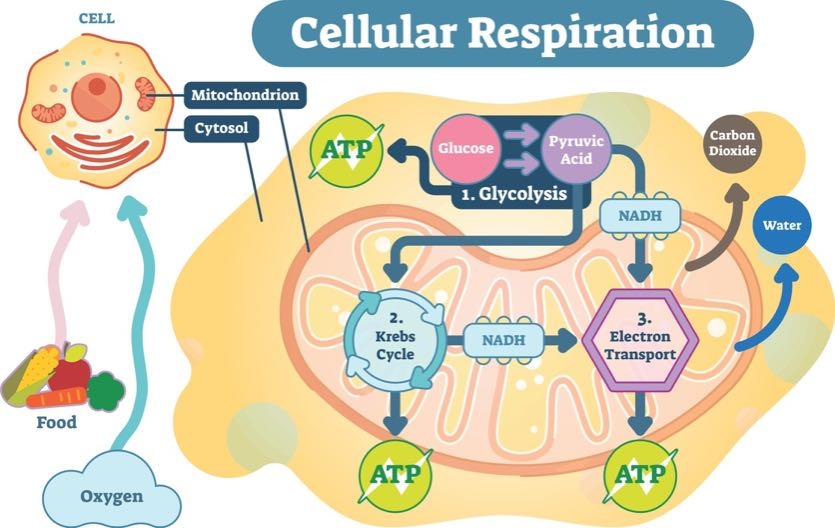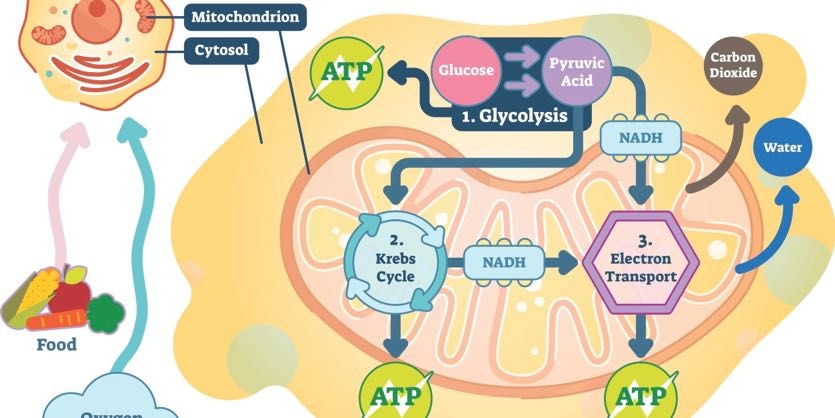Where Within the Cell Is Atp Built Up
Where within the cell is atp built up mitochondria which of the following is a by-product of photosynthesis oxygen the atp synthase complex is located in the cristae of the mitochondria the final products of glycolysis are 2 pyruvate 2 ATP 2 NADH N. Cytoplasm Question 15 Why are two ATP needed to begin glycolysis.

Understanding Atp 10 Cellular Energy Questions Answered Ask The Scientists
The mitochondria produce ATP in their internal membrane system called the cristae.

. ATP is well suited to its role as an an energy carrier within the cell it cannot be used as an effective energy storage molecule as it is designed to store a much smaller amount of energy. Where does glycolysis take place within the cell. Allows transport of substances.
The unique value of ATP is that when glucose is broken down during cellular respiration 100 of the stored energy of glucose is transformed into ATP False ATP contains an adenine base a ribose sugar and 3 phosphate groups. The part embedded within the membrane of the mitochondria in eukaryotes thylakoid membrane of the chloroplast only in plants or plasma membrane in prokaryotes is called F OThis is a motor that is powered by H ions flowing across the membrane. ATP is called universal energy carrier as well as energy currency of the cell.
What forms most ATP. The high energy bond in ATP is found in or between the phosphate groups. Which molecules are the products of aerobic respiration.
In a cell the mitochondria is responsible for making the. Carbon dioxide and water. While many different immunosuppressive mechanisms are likely to come into play recent evidence suggests that extracellular adenosine acting at A2A receptors may have a major role in down-modulating.
When a cell uses substantial energy to organize its cell contents to a greater degree than the organization that exists outside the living cell entropy has decreased. Hereditary material duplicates itself. ATP is the most widely distributed high-energy compound within the human body Ritter 1996 p.
Adenosine Triphosphate ATP is the primary energy carrier in all living organisms on earth. ATP can be broken down into. Cytoplasm The correct answer is.
Breaking down an entire glucose molecule to water and carbon dioxide releases enough energy. ATP is readily used to fuel your bodys many functions. Basically the proton H gradient is built up across IMM by the electron transport chain.
It is also mobile within the cell. This membrane holds proteins that perform the oxidative phosphorylation OXPHOS reaction. A nanomachine is a complex precision microscopic-sized machine that fits the standard definition of a machine.
ADP plus phosphate plus energy. All the chemical processes that take place inside a cell are facilitated by the transport of nutrients within a cell. When the cell requires energy ATP is broken down through hydrolysis.
The xylem that is present in vascular plants is also made up of a large number of cells in order to provide structure and support to the plants. Mitochondria ATP contains an adenine base a ribose sugar and 3 phosphate groups. Which of the following is a substrate of cellular respiration.
ATP is a complex nanomachine that serves as the primary energy currency of the cell Trefil 1992 p93. The inner membrane is where most ATP is created. In eukaryotes the mitochondria produce most of the cells ATP anaerobic glycolysis also produces some and in plants the chloroplasts can also service this function.
ATP can be broken down into. The place where the substrate fits onto the enzyme is called the _____ ADP plus phosphate plus energy. Where within the cell is ATP built up.
ATP is produced in the mitochondria but is found throughout the cell so that the cell will have energy to do work. The main reason that ATP is considered the energy currency in cells is because it. If A - B - C - D - E represents a metabolic pathway then letter E would be product Enzymes maintain their same shape when they bind to a.
The high energy bond is broken and a phosphoryl group is removed. ATP powering the cell. There is growing awareness that tumour cells build up a self-advantageous microenvironment that reduces effectiveness of anti-tumour immune response.
Therefore ATP can pick up energy where it is being liberated and supply the same where it being consumed. ATP usually obtains energy during respiration. Where within the cell is ATP built up.
Where within the cell is ATP built up produced. The skin is built up of millions of tiny cells. Where within the cell is ATP built up mitochondria ATP can be broken down into ADP plus Phosphate plus energy TRUE OR FALSE.
ATP is found in all living cells. Because there are no porins in the inner membrane it is impermeable to most molecules. Microorganisms capture and store energy metabolized from food and light sources in the form of ATP.
ATP adenosine triphosphate is the energy-carrying molecule used in cells because it can release energy very quickly. Where within the cell is ATP built up.

Atp In Living Systems Biology For Non Majors I

Understanding Atp 10 Cellular Energy Questions Answered Ask The Scientists

Cellular Energy Metabolism Atp Production In A Cell Thick Lines Download Scientific Diagram
No comments for "Where Within the Cell Is Atp Built Up"
Post a Comment